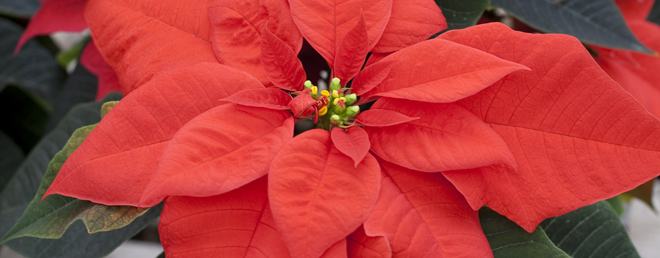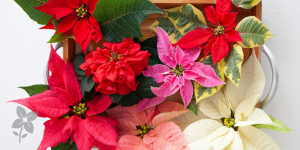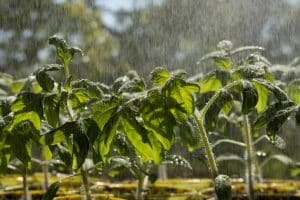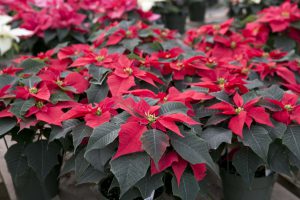Taking Care of your Poinsettia
by Rob Sproule
The exuberant red of a lush poinsettia says Christmas like nothing else can. How a humble, roadside Mexican plant became one of our most iconic holiday symbols is one of history’s great botanical rags-to-riches stories.
Poinsettias are so popular in North America that the U.S.Congress has declared December 12 National Poinsettia day. Despite their popularity however, many people don’t know the specific care needs for Euphorbia pulcherrima.
Choosing your Poinsettia
If you want your poinsettia to be healthy and vibrant at the end of December, make sure to start off with a healthy plant. Buy from a store you trust and, ideally, one that grows its own plants from scratch. Poinsettias don’t like a lot of travel and the less time they spend jammed into the back of a semi the better.
Look for rich, deeply coloured leaves on a broad, well-branched plant. Avoid tall, spindly plants with pale colours and a floppy, exposed central stem. The difference is that well proportioned, broadly branching poinsettias have been grown cool (more expensive as it takes longer), and tall, pale poinsettias have been grown warm (faster and cheaper).
If you see yellow or curled leaves on the plant’s lower stem, keep walking. The former indicates too much water and the latter could be a sign of root-rot, a fatal fungus.
The coloured leaves of the poinsettia are called bracts, and the central cluster of yellow flowers is called the cyathia. If these flowers are still clustered tight together in bud, the plant is still a teenager. If they’re open and have yellow pollen tips, it’s middle aged. If they have opened and the tips are black, look for a younger plant.
Make sure that your poinsettia is wrapped in a paper sleeve when you leave the store, even if it’s above 0 Celsius. These plants are as tropical as they come.
Caring for your Poinsettia
The most common cause of death in poinsettias is overwatering that comes from over-exuberant doting. We often bring home poinsettias while we’re missing our summer container gardens the most and so we tend to lavish copious amounts of love and water on them.
The surface of a poinsettia’s soil needs to dry to the touch before seeing watered again. It’s easy to overwater them, but luckily the plant will tell you to slow down with yellowing leaves near the base. After watering make sure to empty the saucer to avoid waterlogged soil.
Poinsettias don’t like being near cold drafts from doors (which freeze them) or hot drafts from heat vents (which desiccates them). Their leaves will also freeze if they’re in direct contact with a cold window.
Like many tropical plants, they want to be in as bright a spot in the home as possible. Direct sun is great but watch that they aren’t near poorly insulated windows; extreme temperature fluctuations between day and night will lead to a pouting, leaf dropping poinsettia.
Not Poisonous
There’s a common myth that poinsettias are toxic, but they aren’t. Although some might react allergically to the white sap, a 50 pound child would need to eat 500 leaves before their intake is considered toxic (and he/she would vomit it up long before that).
The myth that they are poisonous goes way back to 1919 when a small child reportedly died from eating poinsettias. Although there is no hard evidence that poinsettia ingestion was the cause, and although there have been no significant cases of poinsettia poisoning in the 90 years following, the myth continues.
Poinsettias are also not dangerous to pets. If your dog or cat eats a lot of it (much more than a nibble) it will cause a stomach ache which may lead to vomiting but not more than that.
–

















